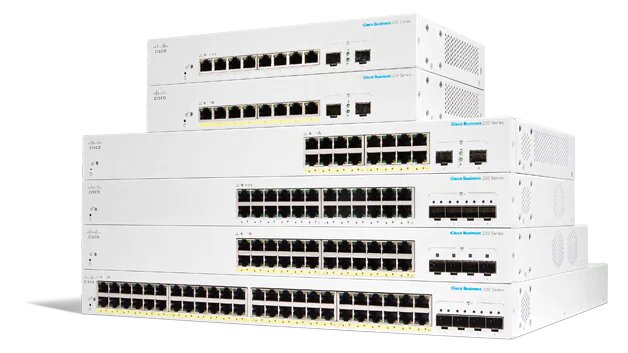In today’s interconnected world, effective network management is a cornerstone of business operations, enabling efficient data transfer, secure communication, and seamless connectivity across devices and locations. As businesses expand and require more complex networking solutions, the need for reliable, smart, and manageable switches has grown significantly. Enter the Cisco Smart Switch—an innovative solution designed to meet the evolving networking needs of modern organizations. Known for their performance, security features, and flexibility, Cisco smart switches offer a balance between ease of use and advanced management capabilities, making them a preferred choice for IT hardware setups in small to medium businesses and enterprise networks alike.
This guest post explores the features, benefits, and applications of Cisco smart switches, highlighting why they have become essential in networking, computer hardware, and broader technology infrastructures. We’ll look at their role in enhancing network performance, security, and scalability, as well as how they help organizations maintain robust and efficient networks.
Understanding Cisco Smart Switches and Their Role in Networking
Cisco has long been a leader in networking technology, providing high-quality, reliable equipment for businesses and organizations around the world. A Cisco Smart Switch is a managed switch designed to provide advanced control over network functions without the complexities that often come with fully managed enterprise-level switches. Positioned between unmanaged switches and fully managed switches, Cisco smart switches allow businesses to optimize network performance while maintaining user-friendly controls for setup and management.
Cisco smart switches are designed to simplify network management and improve efficiency. They offer advanced functionality that enables network administrators to prioritize traffic, control bandwidth, and secure network traffic. For small to medium-sized businesses, which may not have dedicated IT staff for networking tasks, Cisco smart switches offer an accessible way to enhance network performance while minimizing the technical workload.
Key Features That Make Cisco Smart Switches Stand Out
Cisco smart switches offer a range of features that make them an ideal choice for businesses focused on reliable and secure networking. These switches integrate multiple functionalities that help organizations manage their network traffic efficiently, provide a high level of security, and allow scalability as the organization grows.
One of the standout features of Cisco smart switches is VLAN (Virtual Local Area Network) support. VLANs allow businesses to segment their networks, improving security by isolating traffic between different parts of the organization. This feature is particularly valuable in environments where sensitive information needs to be separated from general network traffic. With Cisco smart switches, administrators can easily create, modify, and manage VLANs, allowing for a more secure and organized network structure.
Another essential feature is the QoS (Quality of Service) capability. In today’s business environments, where video calls, data transfers, and real-time applications are common, QoS allows administrators to prioritize traffic based on the type of data being transmitted. By prioritizing critical data traffic, businesses can ensure that essential services like voice and video communications remain stable and unaffected by lower-priority data. This is crucial for maintaining seamless business operations, particularly in remote work setups or when handling high-bandwidth tasks.
Cisco smart switches also come equipped with security features such as Access Control Lists (ACLs), port security, and Storm Control. ACLs provide a high level of control over who can access different parts of the network, allowing administrators to restrict access based on specific policies. Port security features prevent unauthorized devices from connecting to the network, adding an additional layer of security. Storm Control helps mitigate network disruptions caused by broadcast, multicast, or unicast traffic floods, ensuring the network remains stable even during high traffic periods.
The Importance of Cisco Smart Switches in IT Hardware
As businesses grow and evolve, so do their networking needs. Cisco smart switches are an essential piece of IT hardware for organizations looking to balance performance and scalability. They are designed to integrate seamlessly with other networking components, including routers, access points, and firewalls, enabling businesses to create a unified network structure that supports business continuity and operational efficiency.
Cisco smart switches are particularly valuable for businesses that are transitioning from a basic network infrastructure to a more complex setup. With their advanced functionality, these switches allow companies to expand their networks without a complete overhaul of their existing IT hardware. As a result, Cisco smart switches help businesses save on costs and avoid the complexities associated with fully managed switches while still providing many of the management features required for a robust and secure network.
Furthermore, Cisco smart switches are designed to be energy-efficient. With features such as Energy Efficient Ethernet (EEE), Cisco helps reduce power consumption in network devices, aligning with the broader industry trend toward greener technology solutions. Energy-efficient networking hardware is not only beneficial for reducing operational costs but also supports companies in achieving sustainability goals, making Cisco smart switches a valuable asset for organizations concerned with both cost and environmental impact.
Cisco Smart Switches and Scalability for Growing Businesses
In the modern business environment, scalability is a crucial consideration for any technology investment. Cisco smart switches are designed with scalability in mind, providing businesses with a flexible solution that can adapt as Networking needs evolve. Whether an organization is expanding its workforce, adding new locations, or integrating new technologies, Cisco smart switches allow for straightforward network expansion without requiring substantial adjustments to the existing network infrastructure.
The flexibility of Cisco smart switches is demonstrated through their stackable models, which enable administrators to connect multiple switches to act as a single logical unit. This stacking capability provides several advantages, such as increasing network capacity and simplifying management. When switches are stacked, they can be managed as one unit, reducing the complexity of overseeing multiple devices and allowing network administrators to scale up quickly. For growing businesses, this is invaluable as it provides the ability to expand network resources while maintaining streamlined management.
In addition, Cisco smart switches support a range of port options and speeds, allowing businesses to customize their setups based on specific needs. This adaptability ensures that organizations can choose the right configuration for their current requirements while having the flexibility to adjust as those requirements grow. By investing in Cisco smart switches, businesses are future-proofing their network infrastructure, ensuring they have a reliable foundation that can accommodate new applications, increased traffic, and more complex data requirements.
Cisco Smart Switches for Improved Network Security
Network security is a top concern for organizations today, especially with the increasing frequency and sophistication of cyberattacks. Cisco smart switches provide a range of security features that enhance network protection, making them an integral part of a business’s cybersecurity strategy.
As mentioned, Cisco smart switches include Access Control Lists (ACLs), which enable network administrators to set rules that control incoming and outgoing traffic based on IP address, port, or protocol. By controlling network access at the hardware level, ACLs act as a primary defense against unauthorized access and mitigate the risks of internal and external threats.
Additionally, features like port security and Storm Control offer more granular control over network security. Port security, for example, restricts access to certain devices, reducing the likelihood of unauthorized devices connecting to the network and potentially exposing sensitive data. Storm Control, meanwhile, prevents network disruptions by limiting the rate of broadcast, multicast, or unicast traffic, keeping the network stable even during unexpected surges in data transmission.
With these security features, Cisco smart switches contribute to a more secure and resilient network, protecting both the IT infrastructure and the data it transmits. For businesses where data integrity and privacy are paramount, Cisco smart switches are an essential part of the overall security framework.
Cisco Smart Switches vs. Other Networking Solutions
Compared to unmanaged switches, Cisco smart switches offer advanced control over network performance and security. Unmanaged switches, while affordable and easy to use, lack the ability to segment networks, control bandwidth, or set access policies, making them less suitable for business environments where network security and performance are priorities.
While fully managed switches offer the most comprehensive range of features, they often come with a high cost and complexity level that may not be necessary for all businesses. Cisco smart switches, positioned as a middle ground, provide many of the benefits of managed switches but with an emphasis on simplicity and ease of management. This makes Cisco smart switches an excellent choice for businesses looking for enhanced functionality without the complexities of a fully managed switch.
In terms of networking technology, Cisco’s reputation for quality and reliability sets their smart switches apart from other options. Cisco smart switches are widely recognized for their robustness and compatibility with a variety of network setups, ensuring that businesses can rely on their performance in diverse and demanding environments.
Conclusion:
Cisco smart switches have proven to be essential components in the world of IT hardware and networking. By combining advanced functionality with user-friendly management features, they provide businesses with a practical solution for enhancing network performance, improving security, and ensuring scalability. As networking Technology continues to evolve, Cisco smart switches offer a balance between unmanaged and fully managed switches, giving businesses the tools they need to maintain efficient, secure, and scalable networks.
With support for VLANs, QoS, ACLs, and energy-efficient designs, Cisco smart switches are tailored to meet the demands of modern businesses. They provide an accessible way for organizations to elevate their network infrastructure without compromising on security, performance, or cost. Whether for small businesses seeking to enhance their connectivity or larger enterprises aiming to optimize their IT hardware, Cisco smart switches offer a reliable, future-proof solution that can grow with the business and adapt to the challenges of tomorrow’s digital landscape.




